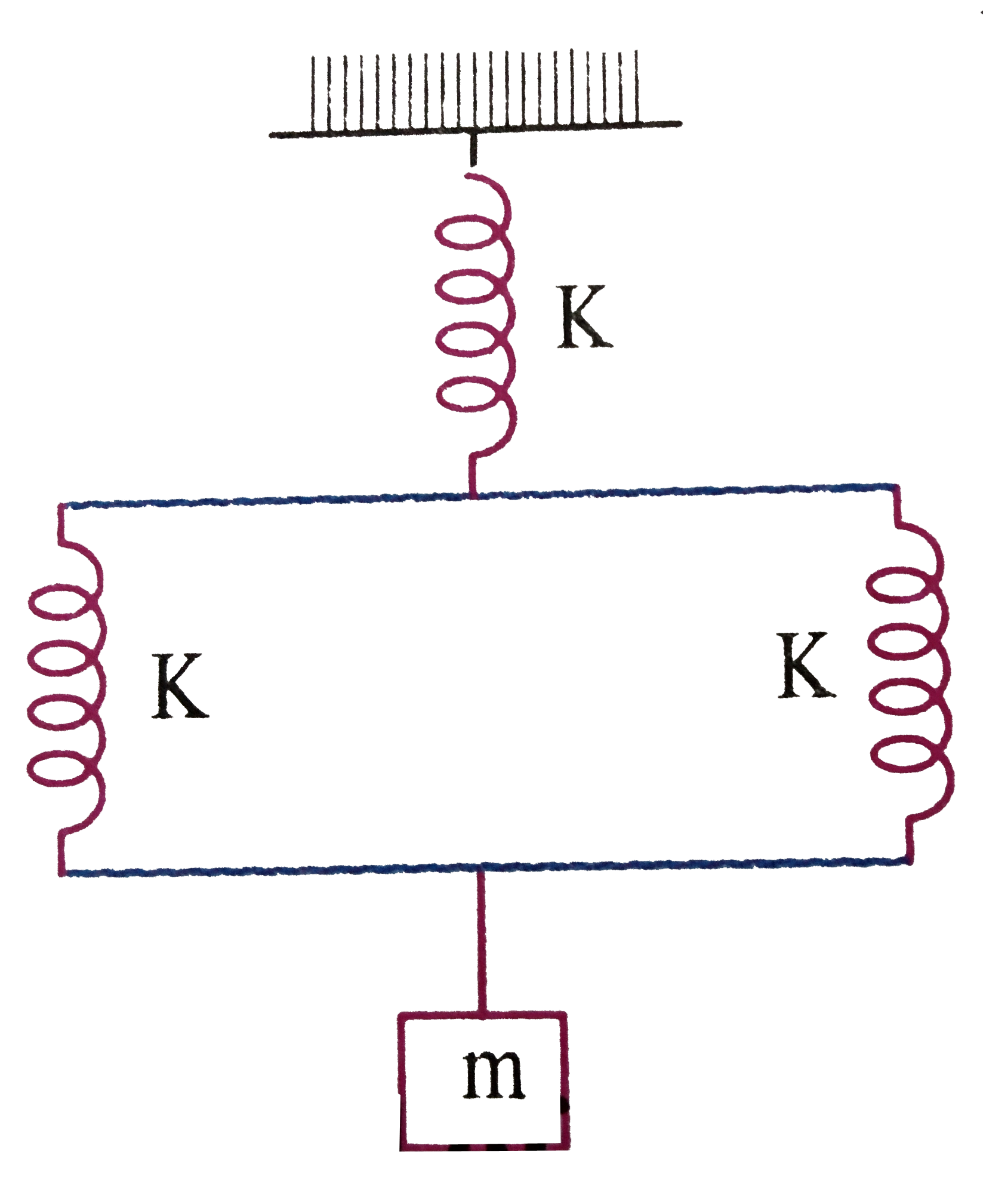A force of 6.4 N stretches a vertical spring by 0.1 m. The mass (in kg) that must be suspended from the spring so that it oscillates with a time period of π4 second.
The correct Answer is:1
To solve the problem step by step, we will follow these calculations:
Step 1: Determine the Spring Constant (k)
We know that the force (F) applied to stretch the spring is given by Hooke's Law:
F=k⋅x
where:
- F=6.4N (force applied)
- x=0.1m (stretch in the spring)
Rearranging the formula to find the spring constant k:
k=Fx
Substituting the values:
k=6.4N0.1m=64N/m
Step 2: Use the Time Period Formula
The time period T for a mass-spring system is given by the formula:
T=2π√mk
We are given that the time period T=π4s. We can set up the equation:
π4=2π√mk
Step 3: Simplify the Equation
Dividing both sides by π:
14=2√mk
Now, divide both sides by 2:
18=√mk
Step 4: Square Both Sides
Squaring both sides to eliminate the square root:
(18)2=mk
164=mk
Step 5: Solve for Mass (m)
Now, rearranging to find m:
m=k64
Substituting the value of k we found earlier:
m=64N/m64=1kg
Final Answer
The mass that must be suspended from the spring is 1kg.
---
We know that the force (F) applied to stretch the spring is given by Hooke's Law:
F=k⋅x
where:
- F=6.4N (force applied)
- x=0.1m (stretch in the spring)
k=Fx
k=6.4N0.1m=64N/m
The time period T for a mass-spring system is given by the formula:
T=2π√mk
π4=2π√mk
Dividing both sides by π:
14=2√mk
18=√mk
Squaring both sides to eliminate the square root:
(18)2=mk
164=mk
Now, rearranging to find m:
m=k64
m=64N/m64=1kg
The mass that must be suspended from the spring is 1kg.
Similar Questions
Knowledge Check
If the period of oscillation of mass M suspended. From a spring is one second, then the period of 4 M will be
A1/2B1/4 secC2 secD4 secWhen a body is suspended from two light springs separately, the periods of vertical oscillations are T1 and T2. When the same body is suspended from the two spring connected in series, the period will be
AT=T1+T2B1T=1T1+1T2CT2=T21+T22D1T2=1T21+1T2
A spring balance has a scale that reads from 0 to 50 kg. The length of the scale is 20 cm. A body suspended from this spring, when displaced and released, oscillates with a period of 0.6s. What is the weight of the body? When 50 kg is put, the extension of spring is 20 cm.
View SolutionA 100 g mass stretches a particular spring by 9.8 cm, when suspended vertically from it. How large a mass must be attached to the spring if the period of vibration is to be 6.28 s?
View SolutionA block with a mass of 3.00kg is suspended from an ideal spring having negligible mass and stretches the spring by 0.2m.
(a) What is the force constant of the spring?
(b) What is the period of oscillation of the block if it is pulled down and released ?
View SolutionA block with a mass of 3.00kg is suspended from an ideal spring having negligible mass and stretches the spring by 0.2m.
(a) What is the force constant of the spring?
(b) What is the period of oscillation of the block if it is pulled down and released ?
View SolutionA 0.02 kg weight produces an extension of 0.02 m in a vertical spring. A mass of 0.1kg is suspended at its bottam and is left after putting down. What is the period of oscillation ?
View SolutionThe periodic time of a mass suspended by a spring (force constant k) is T. The spring be cut into three equal pieces. If the same mass be suspended from one piece, what will be the periodic time ?
View Solution
